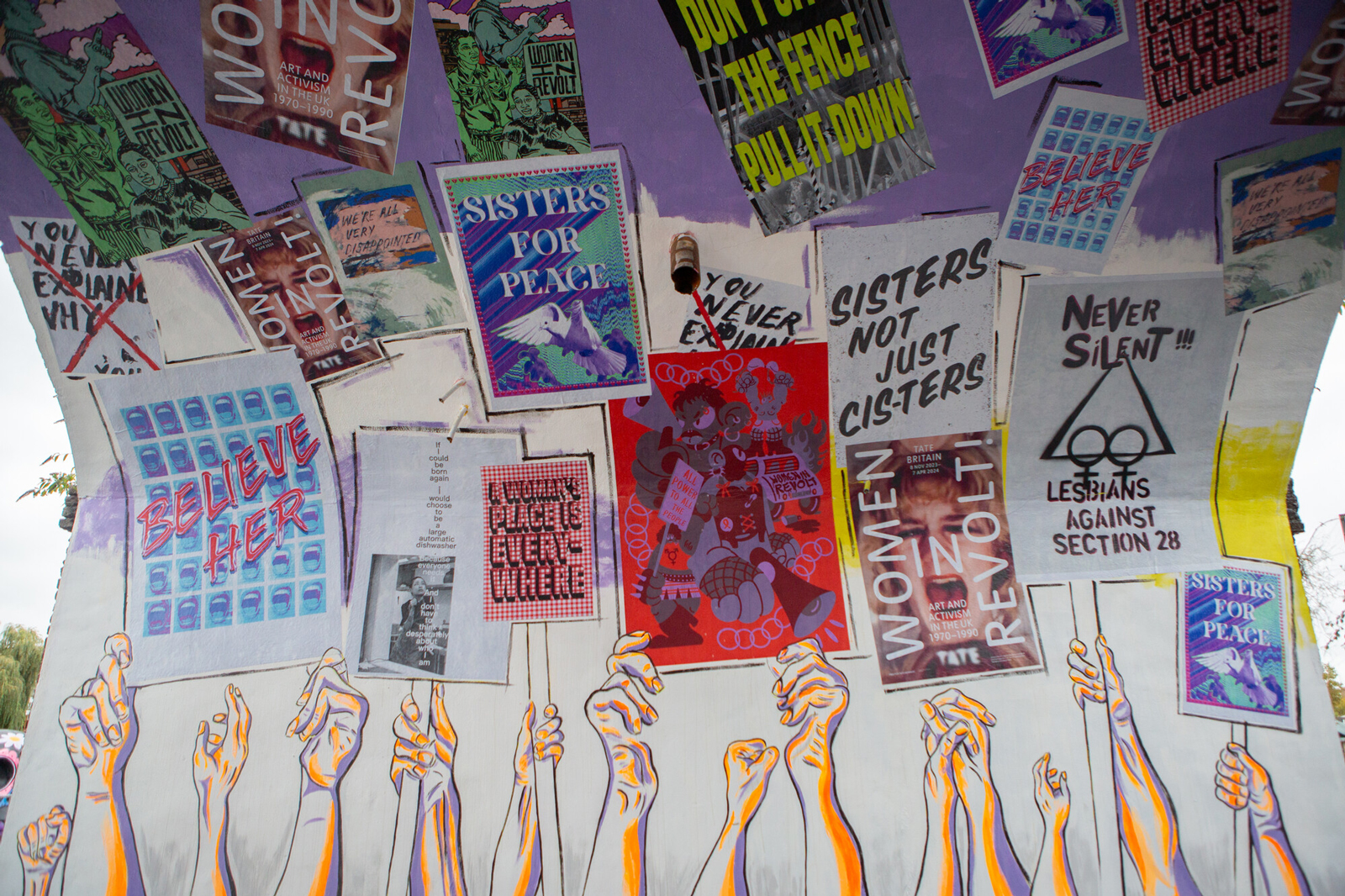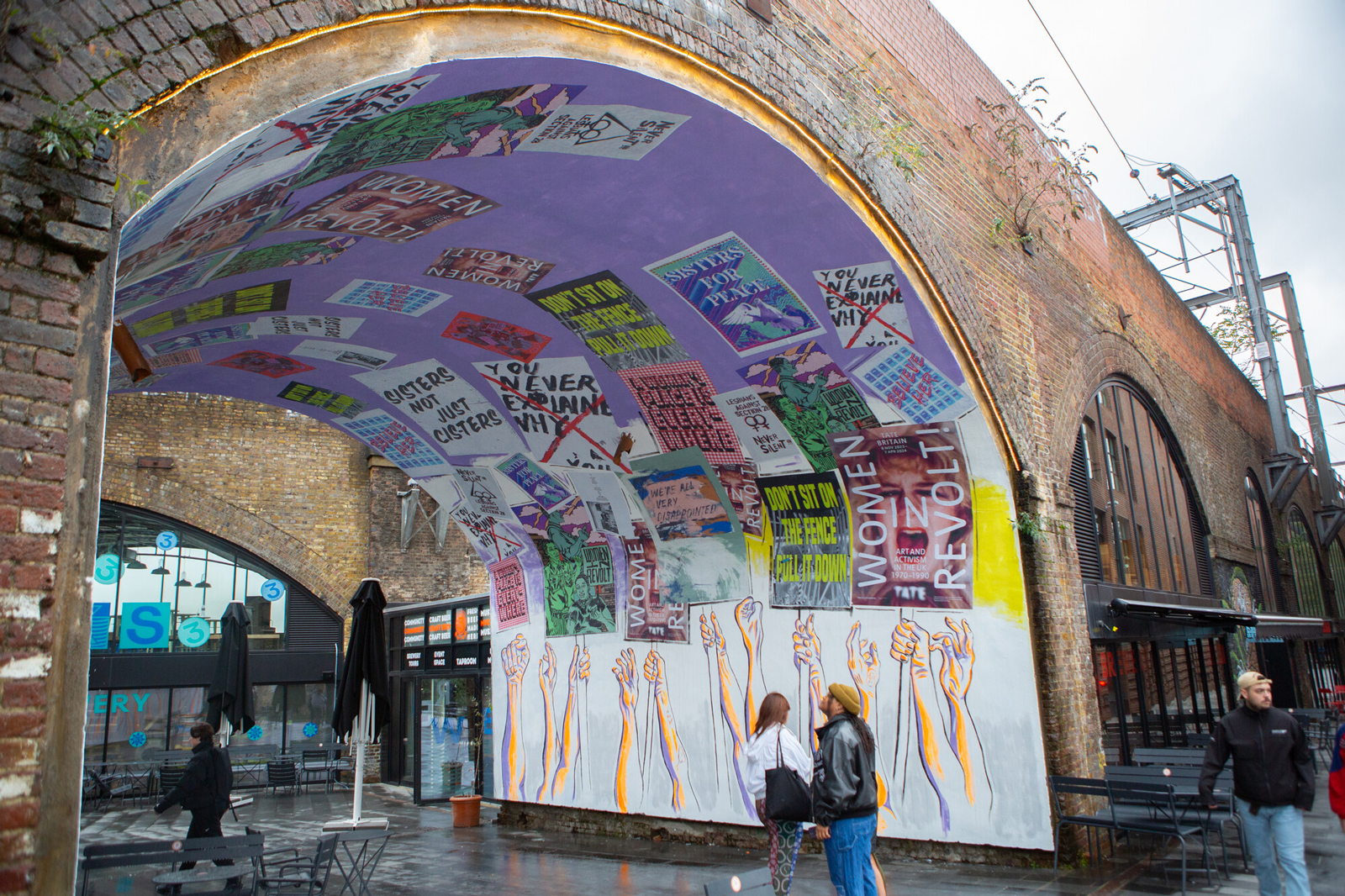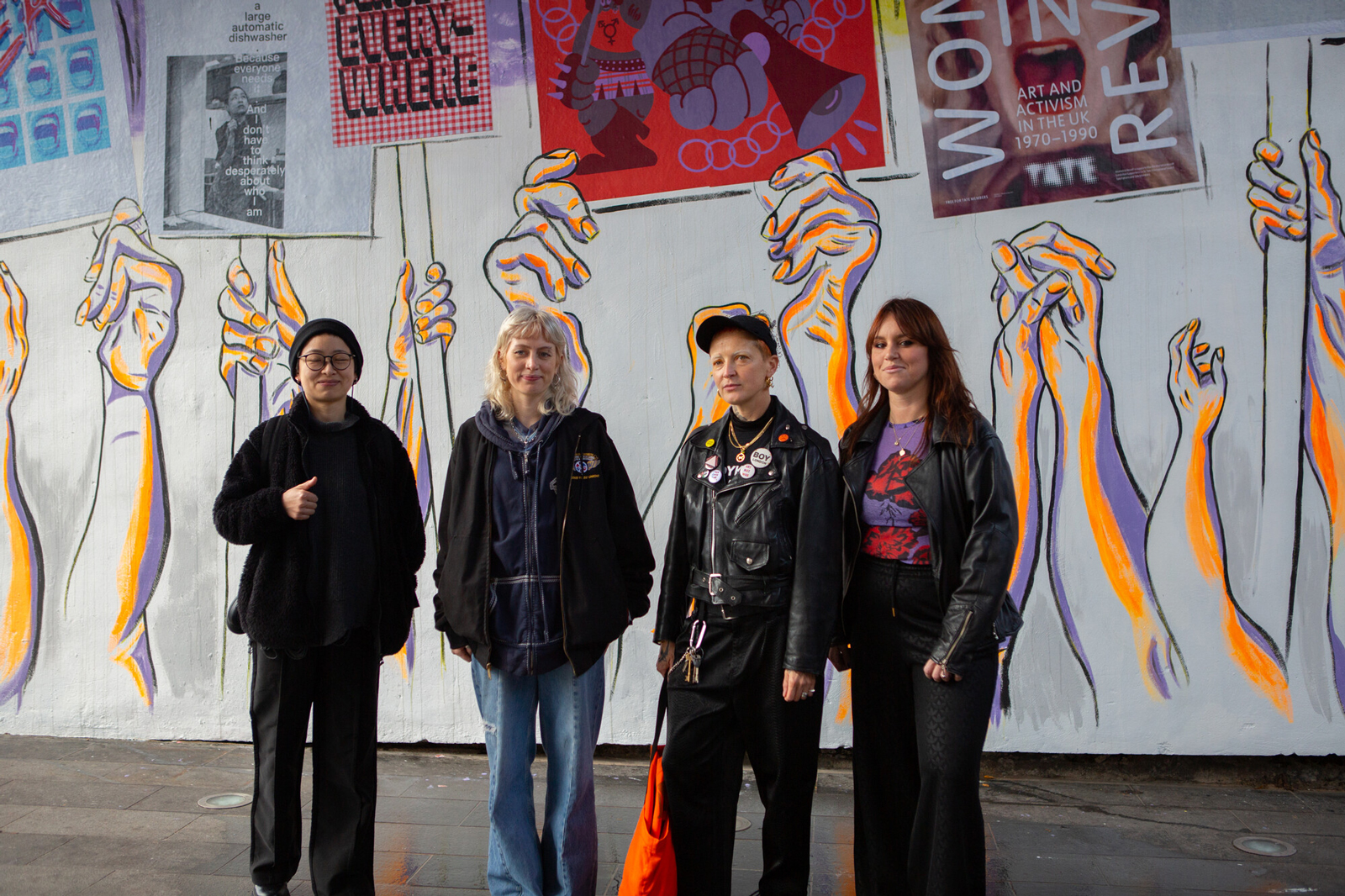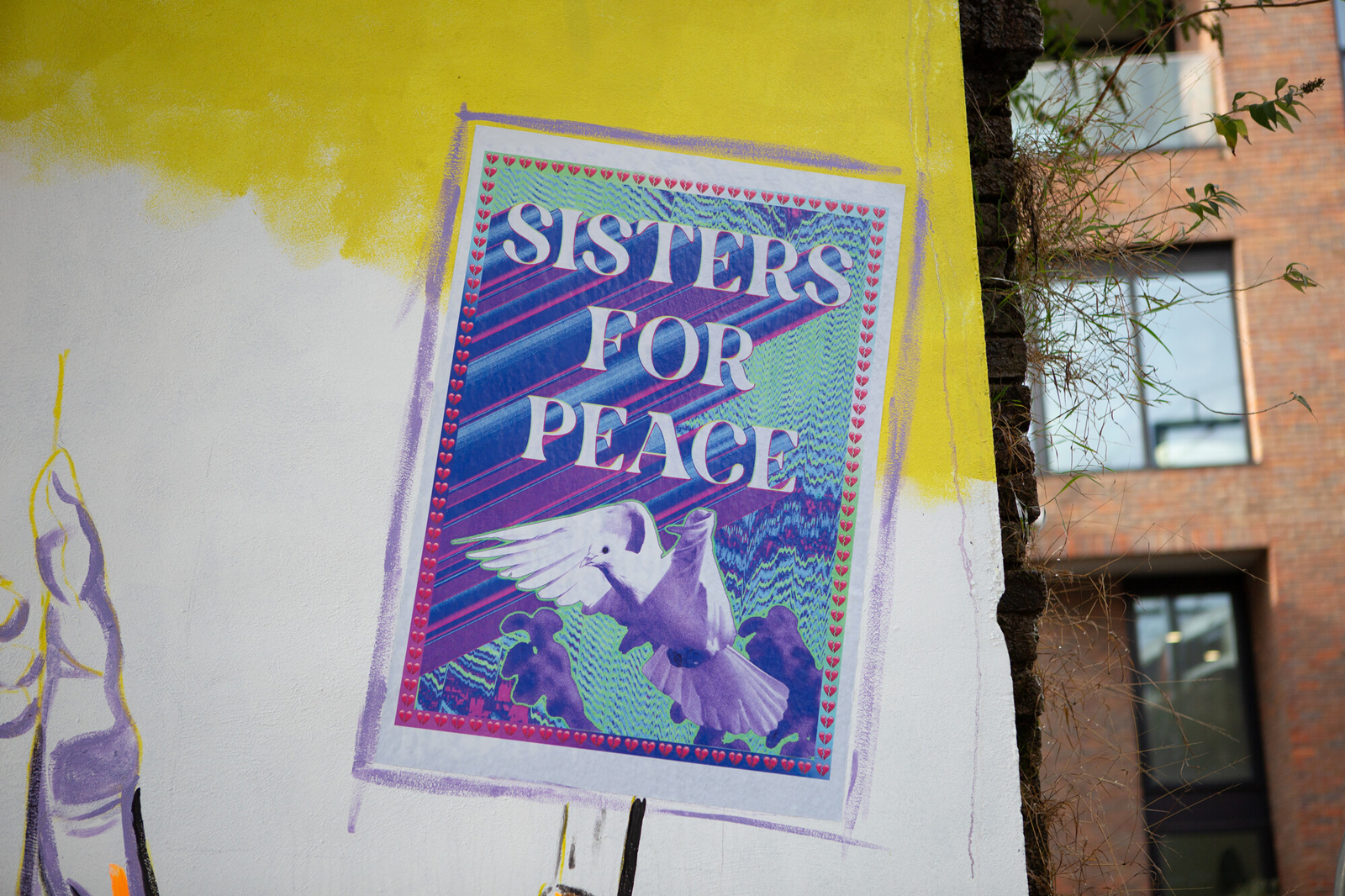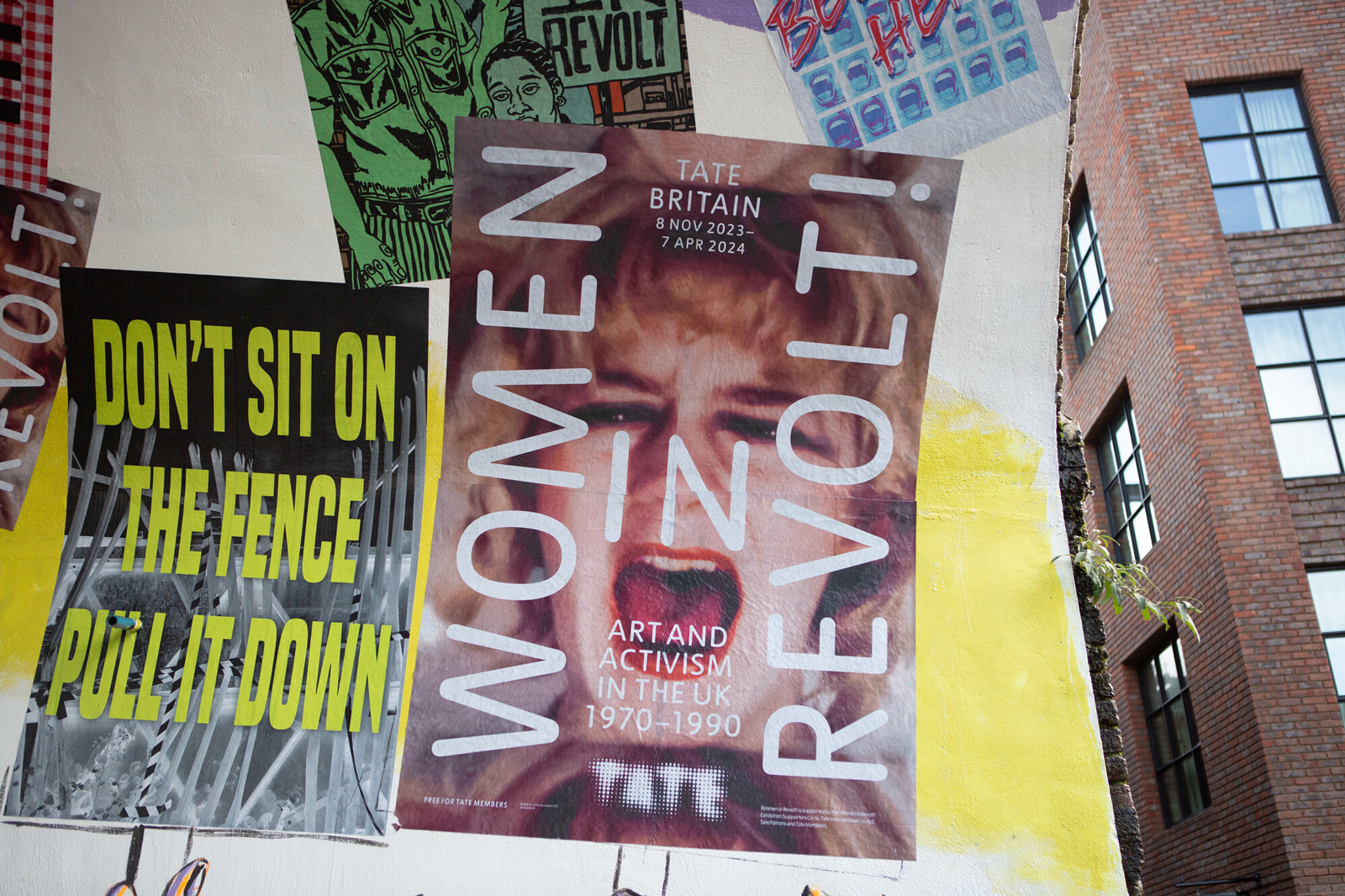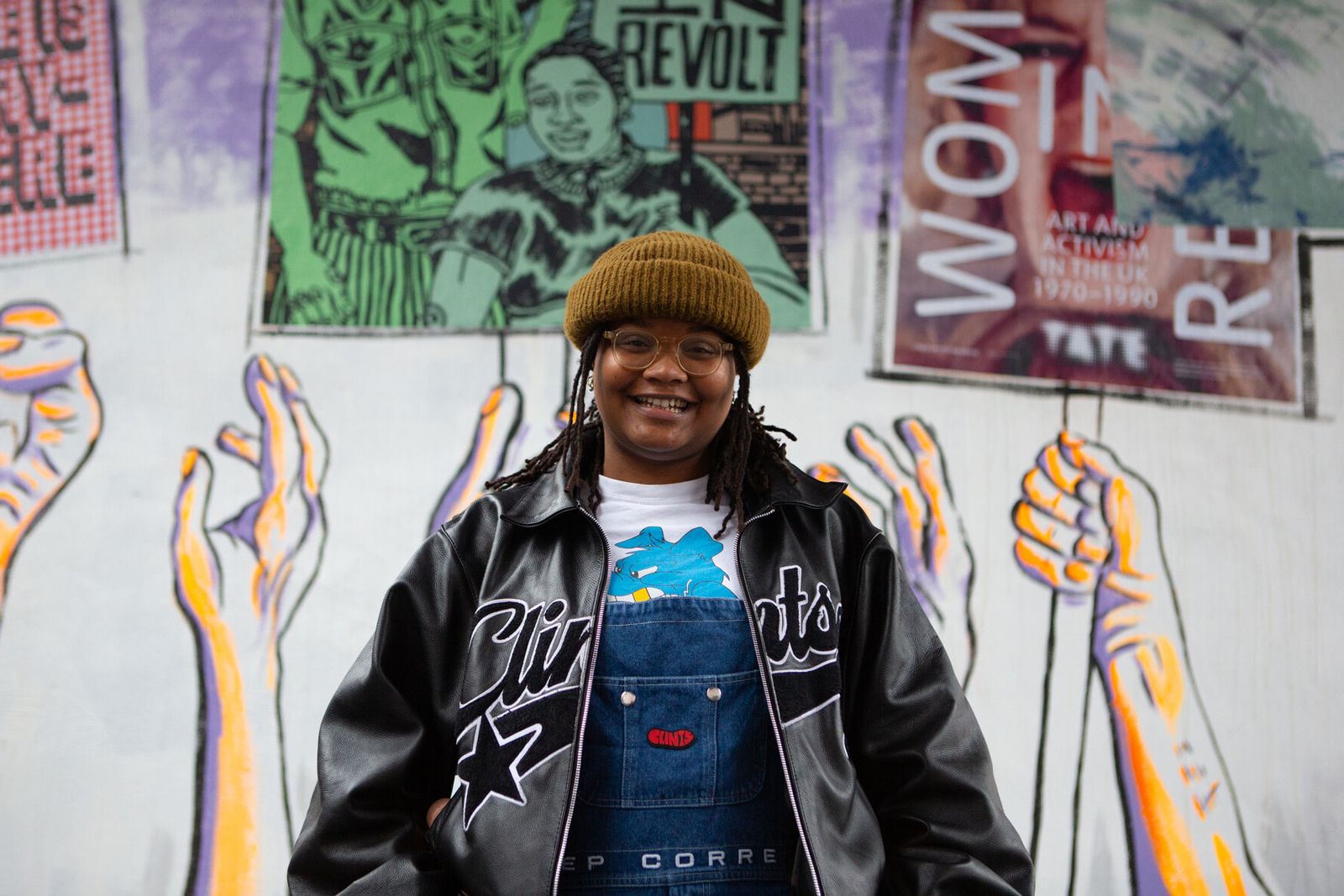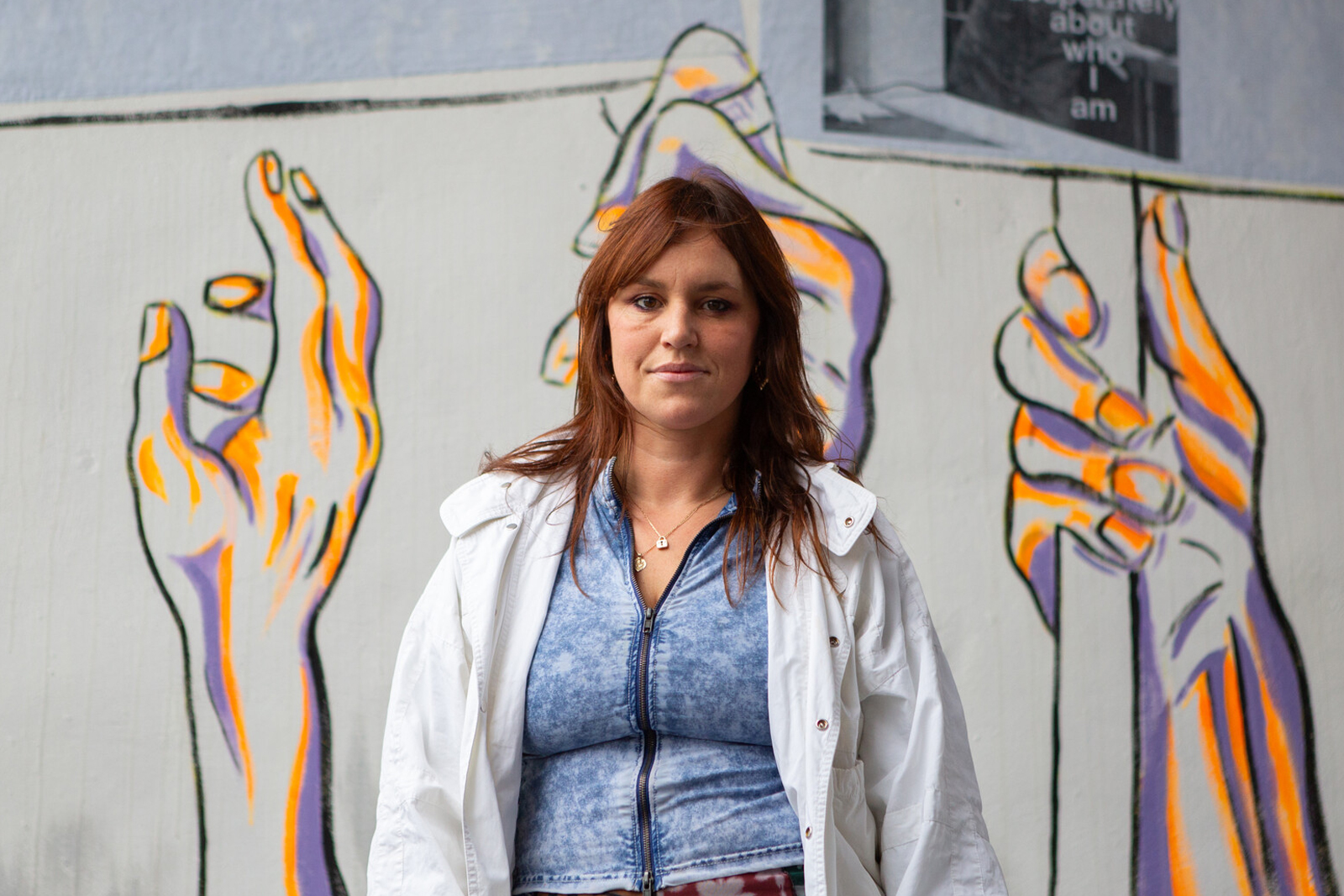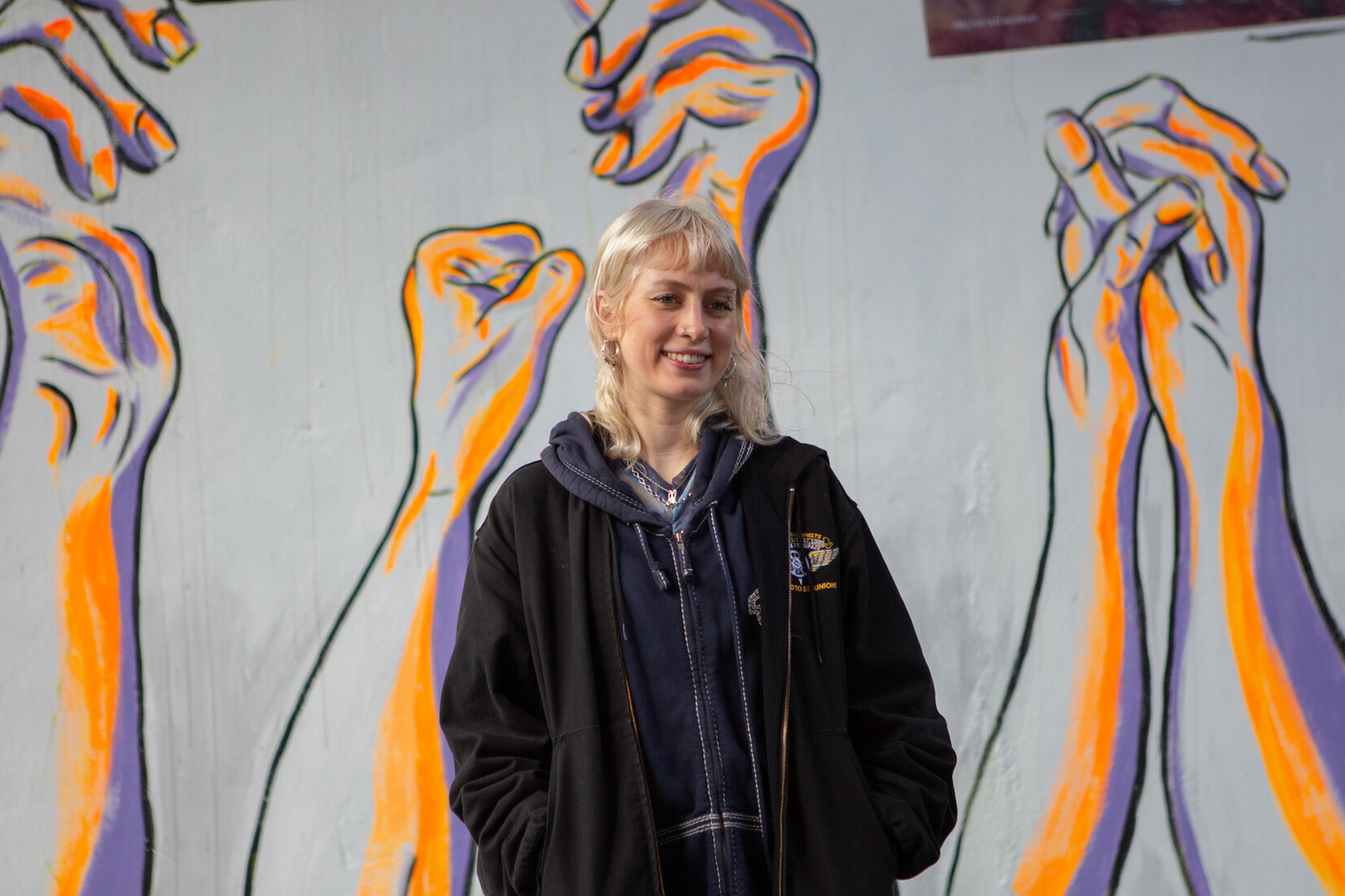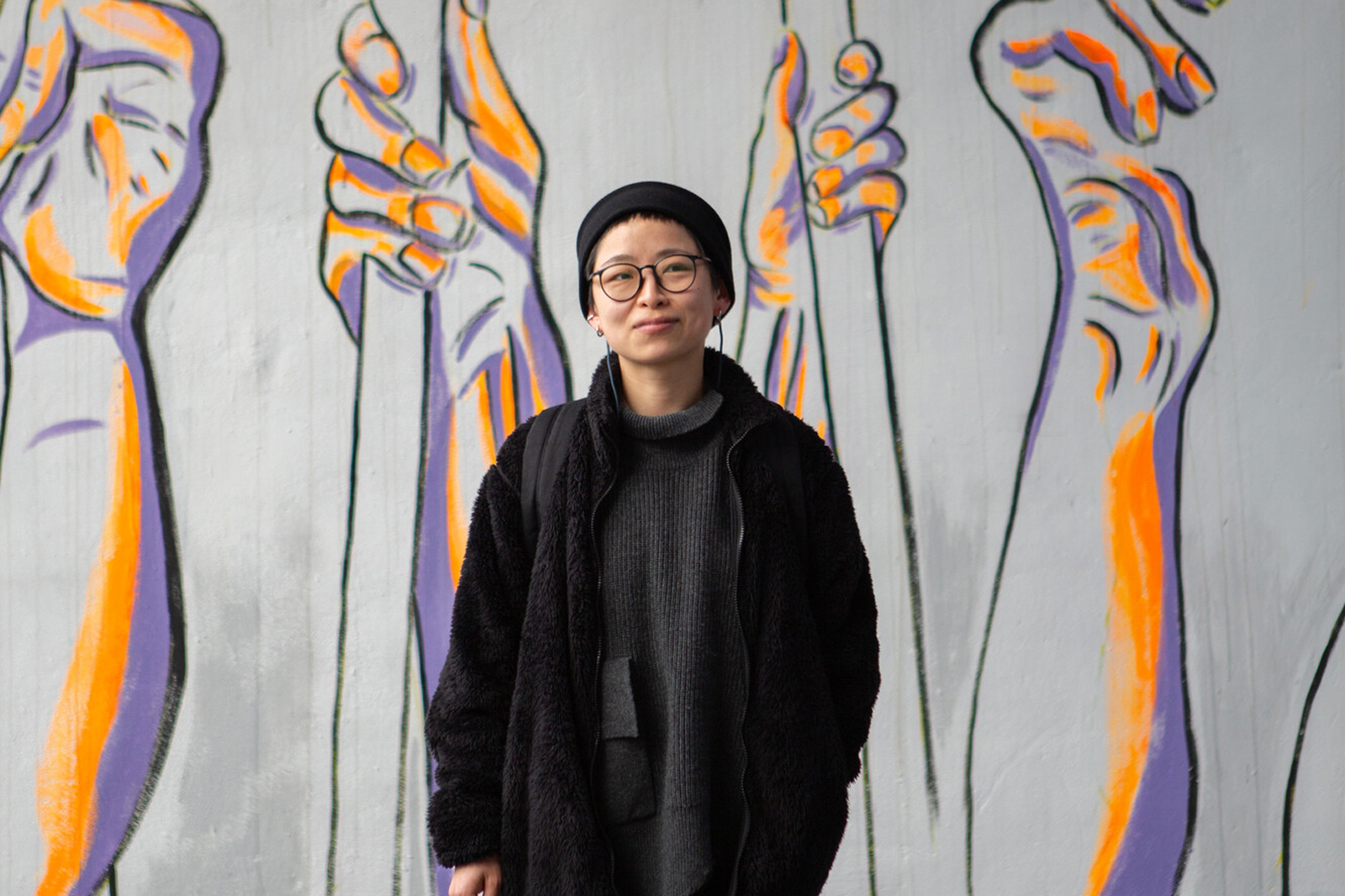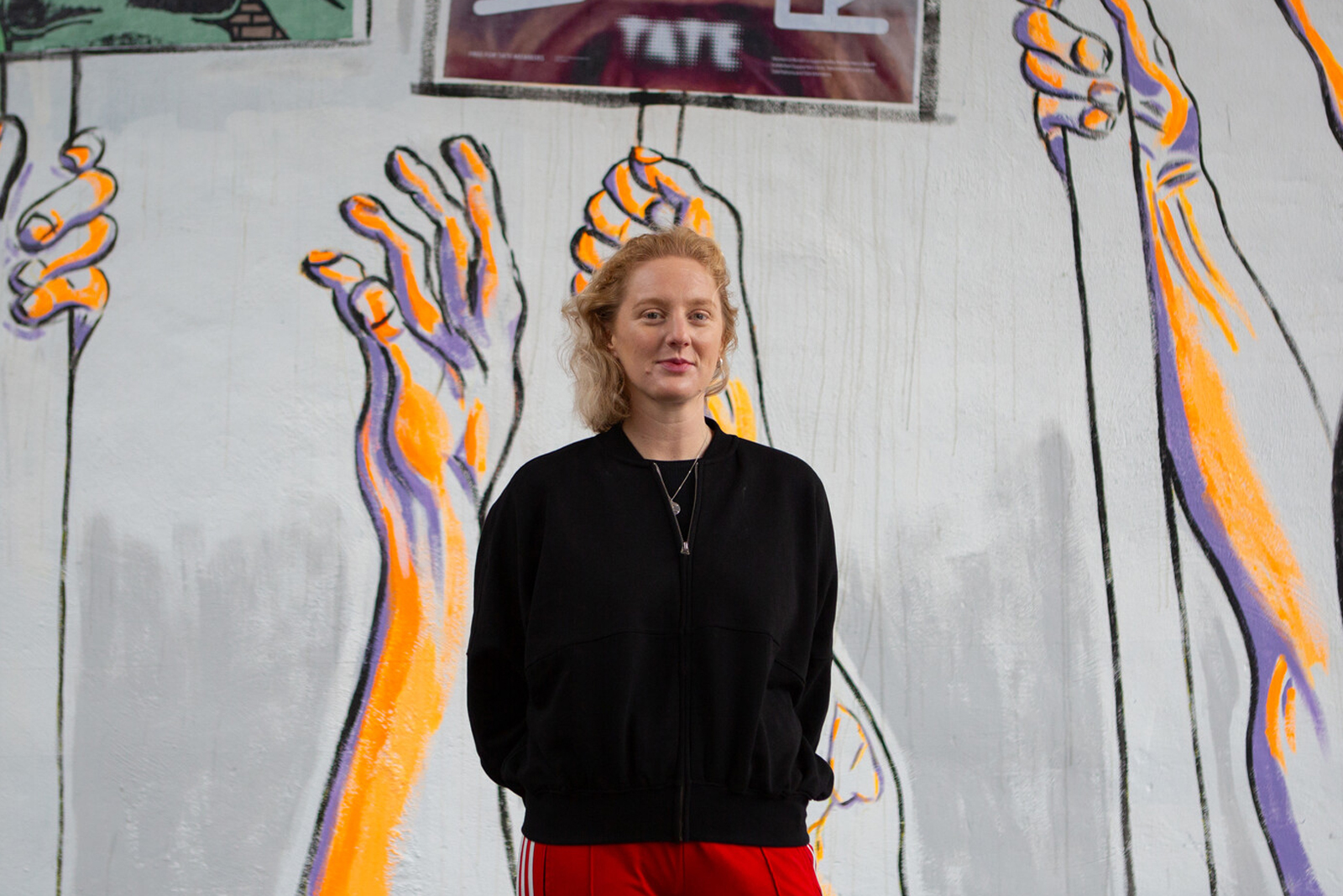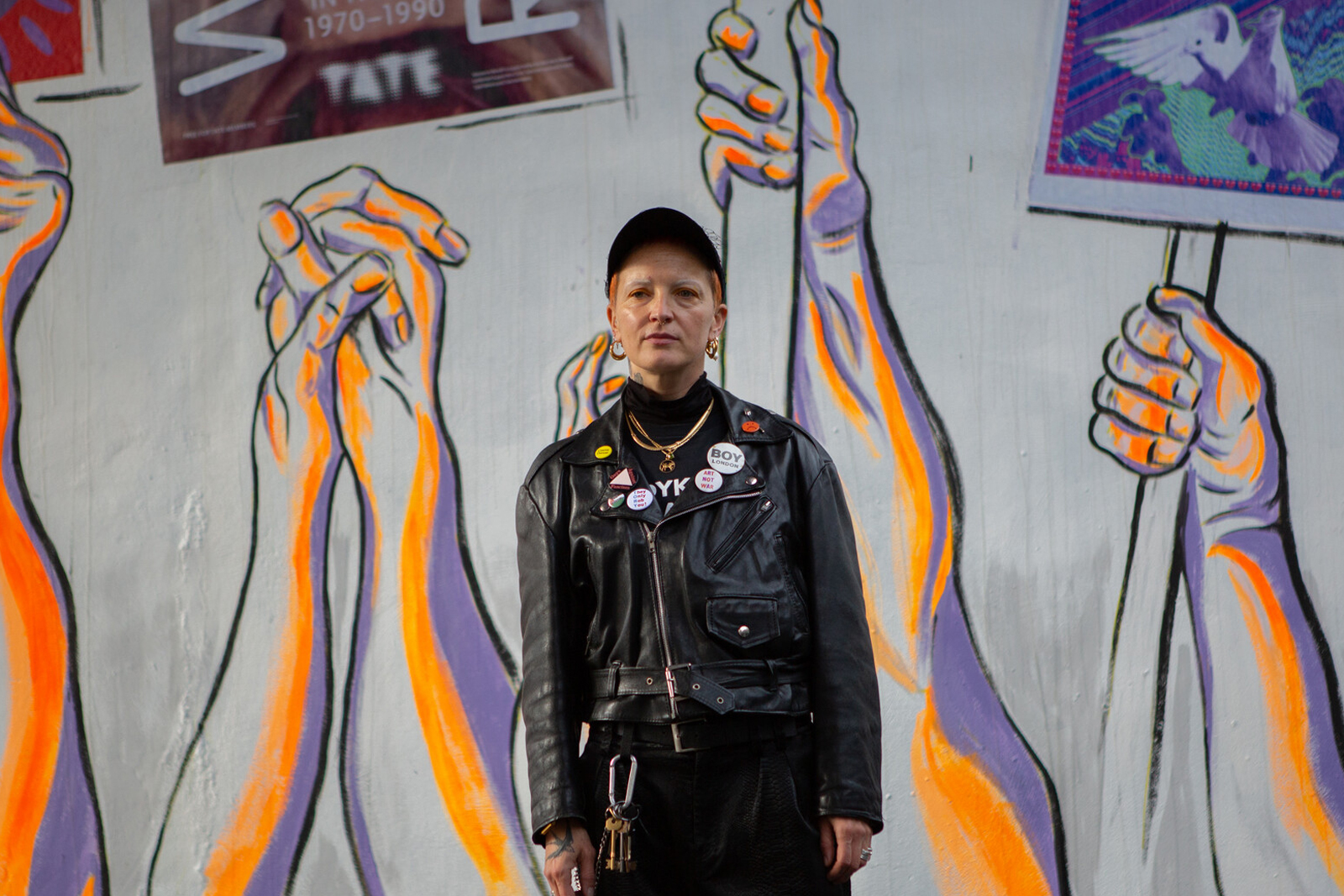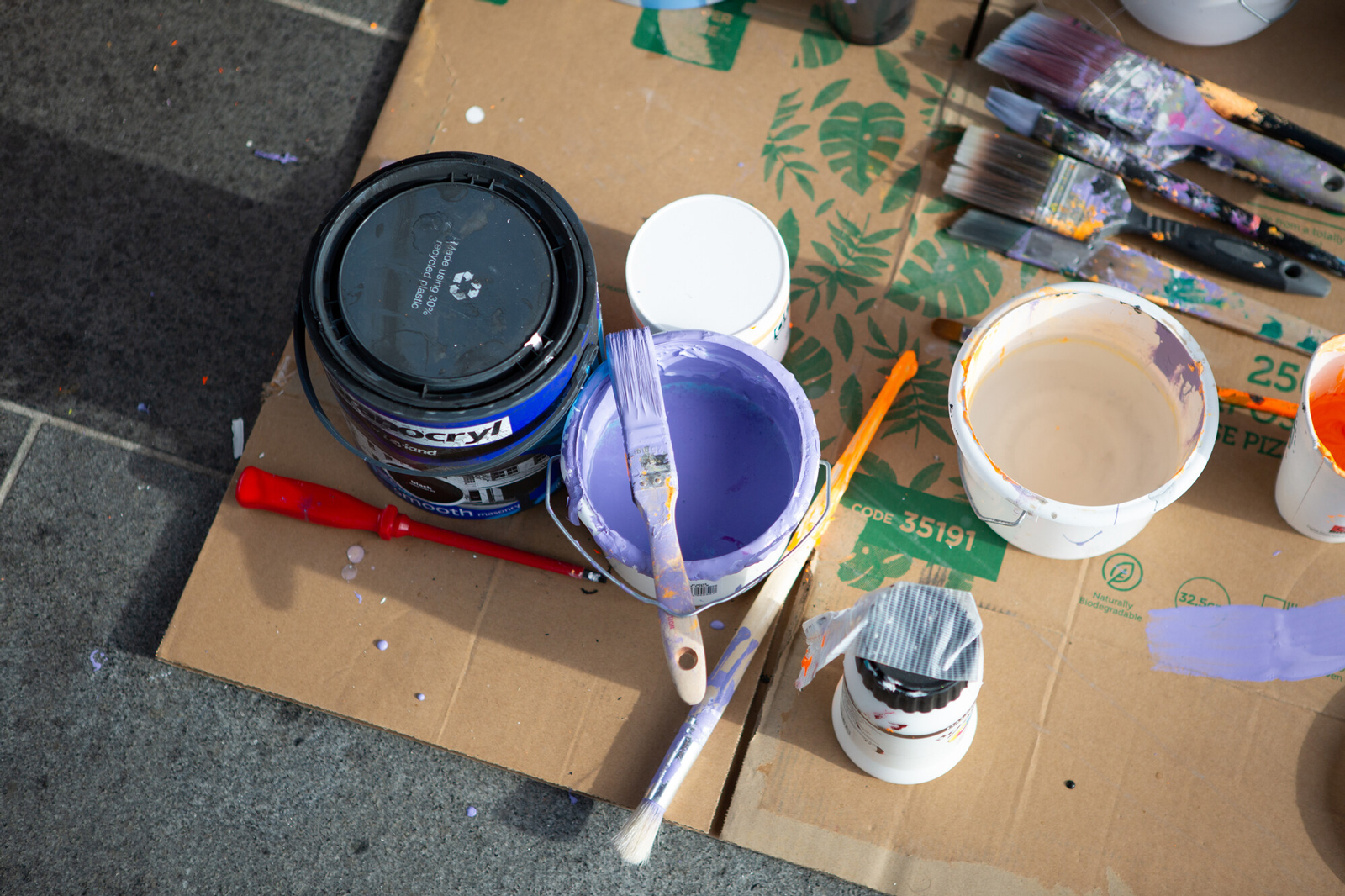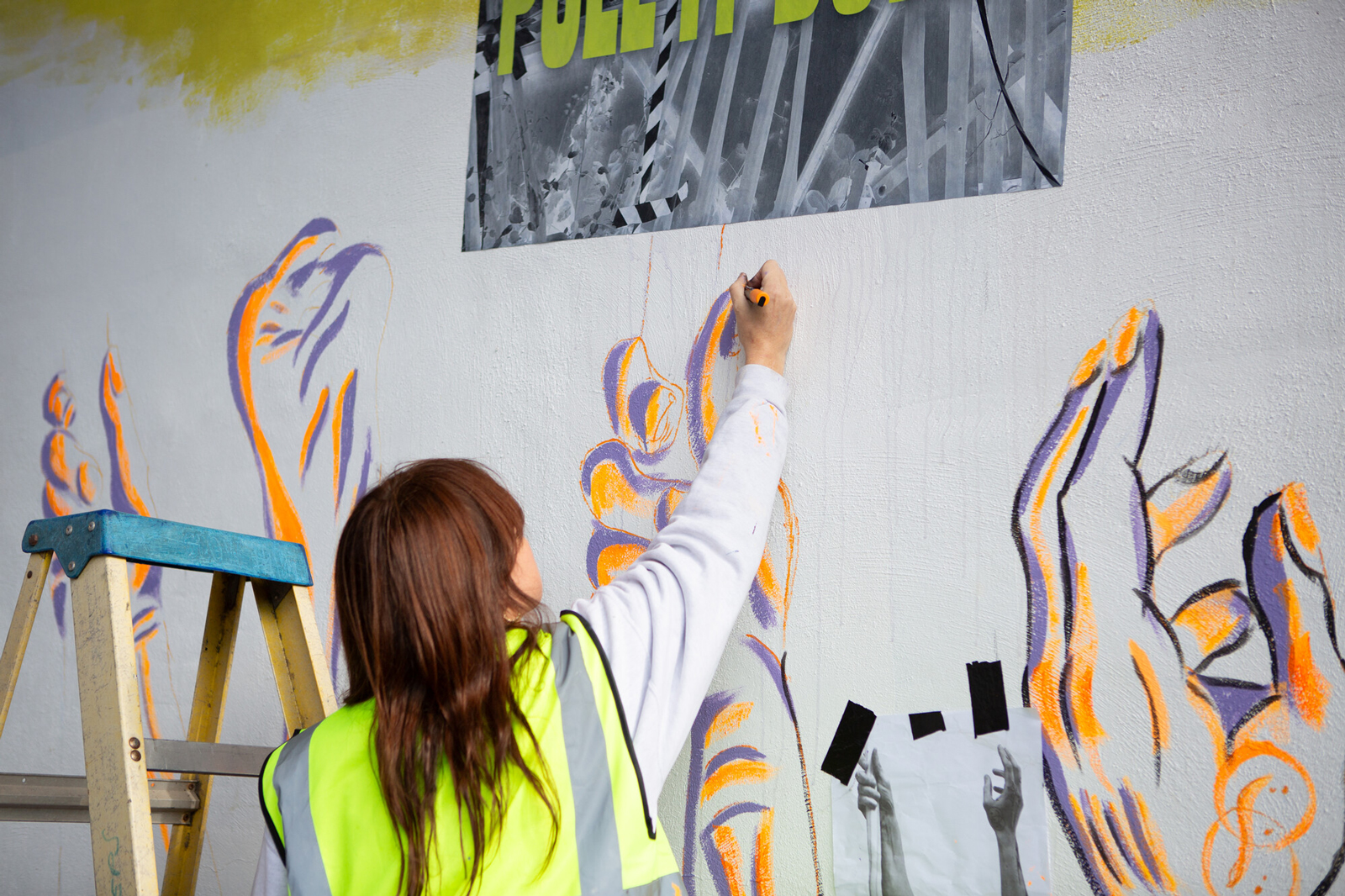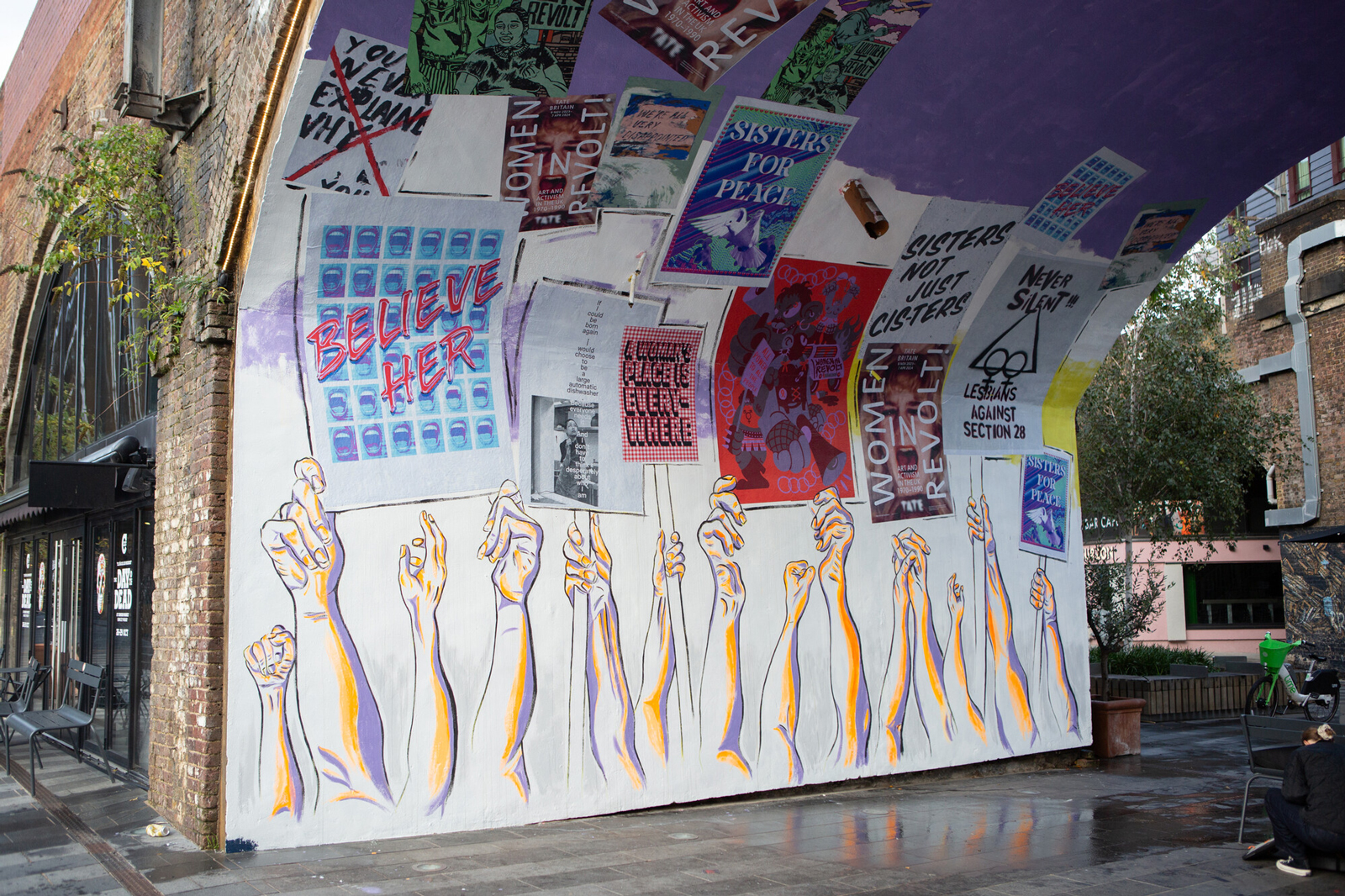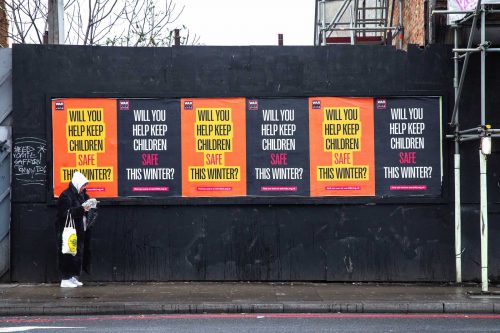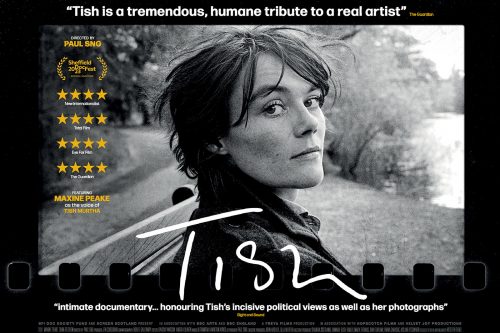Partnerships
In the Camden arches, Tate Britain’s Women in Revolt! comes to life
A new mural designed by artist Hannah “Disco” Dickins speaks to the themes of the Tate’s new exhibition.
We’re always keen to showcase artists’ voices and spread important messages, so we were excited to get the chance to collaborate with Tate Britain on a mural to celebrate their new exhibition. The exhibition, Women in Revolt! Art and Activism in the UK 1970-1990, will be on display from November 2023 until April 2024. Featuring over 100 women artists, the exhibition is the first of its kind, bringing together a wide variety of mediums including painting, drawing, sculpture, performance, film and photography.
According to Tate, the exhibition “explores and reflects on issues and events such as: the British Women’s Liberation movement, the fight for legal changes impacting women, maternal and domestic experiences, Punk and independent music, Greenham Common and the peace movement, the visibility of Black and South Asian Women Artists, Section 28 and the AIDs pandemic.” There is a diverse range of artists featured, many of whom have been left out of the traditional art world and have never been shown in this setting before.
To celebrate this landmark exhibition, we partnered with Tate on a public mural in the heart of Camden. We sourced the space and commissioned the artists including Hannah Dickins, also known as Disco Dickins, to design the Camden mural, working with five emerging London-based artists to develop a collection of protest placards painted under the arches. The works, by Anka Dabrowska, Alice Hartley, Esme Lower, Zhou Ning and Olivia Twist join protest slogans supporting women’s rights taken from archival material in the exhibition. Responding to themes like protest, power, LGBTQ+ activism and women’s rights, the mural is a powerful distillation of the exhibition.
12.12.23
Words by


